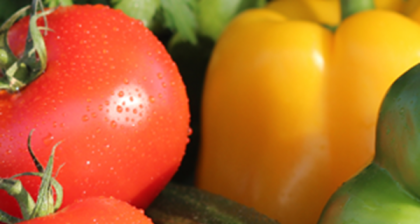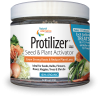Embrace the Charm of Time-Honored Crops
Table of Contents:
- What Are Heirloom Vegetables?
- Our Favorite Heirloom Vegetables in Fall
- How to Grow Heirloom Vegetables in Fall
- Heirloom Vegetable FAQs
- Wrapping Up Your Fall Heirloom Vegetable Journey
- Key Takeaways
Heirloom Vegetables. If you've never heard the term, you might imagine it as something out of a fairy tale. A magical pumpkin, perhaps? A beanstalk sprouting up to the skies? While real-life heirloom vegetables might not open a portal to a giant's castle, they carry a charm and allure that's distinctly their own.
The fall season provides a canvas rich with fiery colors, cool breezes, and a generous harvest. As summer ends, it's the perfect time to focus on heirloom crops.
These historic vegetables bring more than rustic flavors and vibrant colors to your dinner table. They represent a legacy passed down through generations, offering a taste as rich in history as it is in nutrients.
Growing heirloom vegetables in your fall garden is a gratifying experience that bridges the past with the present and nourishes both the body and soul. The simple joy of watching them sprout, grow, and bear fruit is exceptional. It's a journey combining the thrill of gardening with the delight of producing your own home-grown ingredients for cozy, comforting autumn meals.
In this journey, you'll learn about the beauty of heirloom vegetables and discover the natural and eco-friendly products that Natural Alternative offers. All are geared towards making your gardening experience a more sustainable and enjoyable endeavor. So, let's dig in and uncover the enchanting world of fall heirloom vegetables together.
What are Heirloom Vegetables?
Heirloom vegetables are like the cherished family treasures of the gardening universe. Instead of being hidden away, they're displayed in gardens and savored in our meals.
You might be wondering why we use the term 'heirloom' and how is it associated with vegetables. What makes a vegetable an heirloom? An heirloom vegetable is a plant handed down within a family or a community, much like a valuable heirloom item is passed down. Mostly, these vegetables are grown on a smaller scale and are appreciated for their consistent features from one season to the next, not to mention their exceptional taste.
Seeds of heirloom vegetables date back at least 50 years, often even further. These open-pollinated seeds, meaning insects, birds, wind, or other natural mechanisms, pollinate them. Because of this, the seeds of heirloom vegetables can be saved and replanted, assuring a lineage of produce consistent in its attributes and superior in its taste.
In contrast to hybrid varieties, scientifically bred for specific traits like resistance to diseases or uniform size, heirloom vegetables often feature unique shapes, a broad array of colors, and a depth of flavor that many gardeners and food lovers find irresistible.
Another important feature of heirloom vegetables is their contribution to agricultural biodiversity. By growing and preserving these historical plant species, we're protecting genetic diversity in the world of plants. This is crucial for our ecosystems' well-being and future food security.
We will introduce some heirloom top picks that are great for your fall garden and provide handy tips for growing them successfully with Natural Alternative's environmentally friendly products. The garden from the good old days is waiting, let's step into it together!
Our Favorite Heirloom Vegetables for Fall
Autumn has cooler temperatures and scenic beauty, and it's an ideal backdrop for the hearty, robust flavors of fall heirloom vegetables. There's joy in harvesting a bumper crop of produce that can turn any autumn meal into a feast. Let's explore some of our favorite heirloom vegetables that thrive in the fall and can add a touch of rustic charm to your garden and dining table.
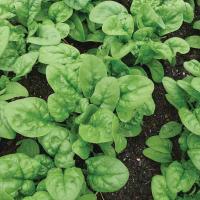
Bloomsdale Spinach: This isn't your ordinary spinach. Bloomsdale is a classic variety with a history dating back to the 19th century. Its dark green leaves are rich in flavor, making it a perfect addition to fall salads or warm, comforting stews.
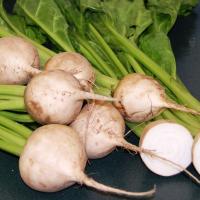
Albino Beets: Don't let the name fool you. Albino Beets offer a sweet, mellow flavor with a tender texture even when raw. Their white color is a delightful change from the usual deep red of other beets, and they're less likely to stain your hands during preparation.

Dragon Carrots: These exotic-looking carrots bring a vibrant splash of color to the fall garden. Dragon Carrots feature a deep purple outer skin with a bright orange or yellow core. But it's not just their looks that are appealing - they're also high in antioxidants and have a sweet, almost spicy flavor.
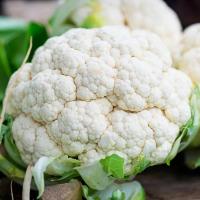
Snowball Cauliflower: Living up to its name, Snowball Cauliflower produces compact, round heads that are a pristine white, resembling a snowball. Its mild and delicate flavor is a perfect addition to various dishes, from gratins to stir-fries.
Each of these heirloom varieties offers its own unique qualities and can withstand the colder temperatures of the fall season. They are typically ready to harvest within 50 to 70 days, providing a relatively quick and rewarding return on your gardening efforts.
Consider using Protilizer® Seed & Plant Activator from Natural Alternative to give these plants the best start. This all-natural product promotes strong root development and boosts plant growth, helping to ensure a successful harvest.
In the next section, we'll share some tips and guidelines on planting, caring for, and harvesting these fall heirloom vegetables. After all, every gardener needs a bit of wisdom to guide their green thumb.
How to Grow Heirloom Vegetables in Fall
Growing heirloom vegetables can be exciting and a little daunting, but with the right tools and knowledge at your disposal, it can be a gratifying experience. Let's delve into some critical steps to successfully grow your fall heirloom vegetables.
- Preparation: It all starts with good soil. A well-prepared garden bed can benefit your crop's growth and yield. Start by clearing your chosen garden spot of any weeds or debris. Once done, it's time to enrich the soil. Mixing in organic compost or well-rotted manure can enhance the soil structure and provide the necessary nutrients for your vegetables.
- Planting: When planting your seeds, follow the instructions on the seed packet for spacing and depth guidelines. The packet will also inform you how long the seeds germinate, which can help you plan your garden.
- Care: Regular watering is key for the healthy growth of your vegetables, especially in the early stages. However, avoid over watering as it can lead to root rot. In terms of feeding, a balanced organic fertilizer can help nourish your plants throughout their growth cycle.
- Protection: Protecting your plants from pests and diseases is crucial for a successful harvest. Companion planting, where certain plants are grown together for mutual benefit, can help deter pests. Regularly checking your plants for any signs of disease can also ensure early detection and treatment.
- Harvest: Harvest time varies by vegetable and by variety. Generally, most heirloom vegetables are ready to be harvested when they're firm to the touch and have reached their mature color.
- Seed Saving: One of the joys of growing heirloom vegetables is saving seeds for the next planting season. Simply collect seeds from your healthiest plants, dry them, and store them in a cool, dry place for the following year's sowing.
To give your heirloom vegetables a good start, consider using Natural Alternative's Protilizer® Seed & Plant Activator. It can help establish strong roots and encourage growth, setting your plants up for success.
Growing heirloom vegetables in the fall yield a bounty of fresh produce and let you participate in the age-old tradition of preserving plant diversity and history. You carry a legacy of time-honored flavors and gardening wisdom with each seed sown. It's not just gardening but a voyage into our collective past.
Heirloom Vegetable FAQs
- What are heirloom vegetables?
- Heirloom vegetables are old-time varieties, open-pollinated instead of hybrid, and often saved and passed down through multiple generations of families.
- What makes heirloom vegetables unique?
- Besides their diverse flavors and shapes, heirloom vegetables often have a nostalgic history or story. They are known for their robust taste, nutritional richness, and ability to save seeds from year to year.
- What are some excellent heirloom vegetables to grow in the fall?
- Some fall favorites include Bloomsdale Spinach, Albino Beets, Dragon Carrots, and Snowball Cauliflower. These hardy varieties can withstand colder temperatures and typically be harvested within 50 to 70 days.
- How can I prepare my garden for planting heirloom vegetables?
- Start by clearing your chosen garden spot of any weeds or debris. Next, enrich the soil by mixing in organic compost or well-rotted manure. This will enhance the soil structure and provide the necessary nutrients for your vegetables.
- How do I protect my heirloom vegetables from pests and diseases?
- Companion planting, where certain plants are grown together for their mutual benefit, can help deter pests. Regularly checking your plants for any signs of disease can also ensure early detection and treatment.
- How can I tell when my heirloom vegetables are ready to harvest?
- Most heirloom vegetables are ready to harvest when they're firm to the touch and have reached their mature color. However, the specific timing can vary by vegetable and variety.
- What is seed saving, and why is it important with heirloom vegetables?
- Seed saving is the practice of collecting seeds from your plants to use for the next planting season. With heirloom vegetables, this is particularly valuable as it allows you to continue the lineage of these traditional varieties.
- What products from Natural Alternative can support the growth of my heirloom vegetables?
- Natural Alternative's Protilizer® Seed & Plant Activator is an all-natural product that promotes strong root development and boosts plant growth, setting your plants up for success.
- Where can I find more resources or support for my gardening journey?
- You can explore Natural Alternative's product range or contact us directly for more insights and assistance on your gardening journey.
Wrapping Up Your Fall Heirloom Vegetable Journey
The world of heirloom vegetables is as diverse and rich as its history. With their unrivaled flavors and rustic charm, these cherished plants can transform your fall garden into a living museum of gardening heritage.
The journey of growing these historical gems offers a unique sense of satisfaction. It's about more than simply having fresh produce at your disposal. It's about connecting with our past, understanding the journey of our food, and experiencing the rhythm of the seasons in a profoundly personal way.
As you tend to your heirloom plants, remember that you're not just growing vegetables but also cultivating a tradition, history, and love for nature's bounty. With Natural Alternative's commitment to sustainable, chemical-free gardening solutions, your venture into the world of heirloom vegetables can be all the more fulfilling.
So, as the leaves change their colors and the air gets a little crisper, let's prepare our garden beds and sow the seeds of our favorite fall heirloom vegetables. It's time to grow not just food but also a legacy. Here's to a bountiful fall harvest!
For more insights and support on your heirloom vegetable gardening, explore our range of products or contact us directly. We're here to help you grow.
Key Takeaways
- Heirloom Vegetables: Heirloom vegetables are open-pollinated varieties passed down through generations. They are known for their diverse flavors, nutritional richness, and the ability to save and reuse their seeds.
- Fall Favorites: Some popular fall heirloom vegetables include Bloomsdale Spinach, Albino Beets, Dragon Carrots, and Snowball Cauliflower. These varieties can withstand colder temperatures and offer a vibrant harvest in the fall season.
- Growing Heirloom Vegetables: Growing heirloom vegetables involves preparing the soil with organic compost, planting seeds following the packet instructions, regular watering, protecting plants from pests and diseases, and harvesting when they reach their mature color.
- Seed Saving: Heirloom vegetables allow for seed saving, where seeds are collected from the plants, dried, and stored for the next planting season. This practice helps preserve these traditional varieties.
- Natural Gardening Solutions: Using products like Natural Alternative's Protilizer® Seed & Plant Activator can support the healthy growth of heirloom vegetables by establishing solid roots and promoting natural growth.
- Gardening as a Connection: Cultivating heirloom vegetables is not just about growing food but about connecting with our past, understanding our food's journey, and experiencing the rhythm of the seasons in a profoundly personal way.
- Support and Guidance: Natural Alternative offers a range of products and resources to support gardeners on their journey to cultivating heirloom vegetables and achieving a successful harvest.
